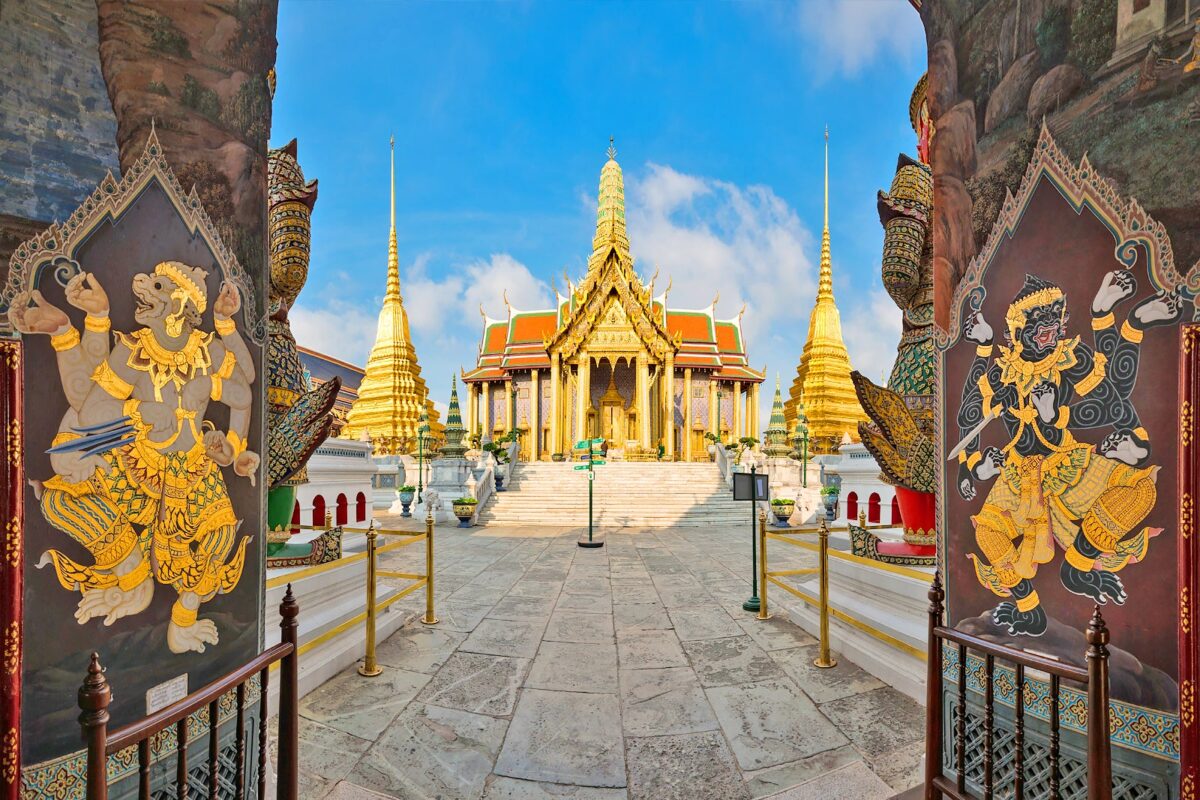Welcome to this blog exploring the rich history of Bangkok! Get ready to embark on a journey through time, as we delve into the fascinating history of this vibrant city, from its ancient roots to its contemporary role as a major hub of Southeast Asia.
As we explore the different eras of Bangkok’s history, from the Ayutthaya era to the cultural renaissance of the 1980s and 1990s, we will see how the city has evolved and grown, and how its rich cultural heritage has been preserved and celebrated.
So come along with us as we delve into the rich history of Bangkok, and discover the stories, experiences, and cultural heritage that have made this city one of the most fascinating and dynamic destinations in Asia.
Table of Contents
Introduction to Bangkok’s history
Bangkok, also known as Krung Thep or the “City of Angels,” is the capital and largest city of Thailand. The city has a rich and fascinating history that spans over 200 years, reflecting the cultural and political changes that have shaped the country over time. From its humble beginnings as a small trading post to its current status as a bustling metropolis, Bangkok has undergone countless transformations, making it one of the most intriguing cities in Southeast Asia. In this blog, we will explore the rich history of Bangkok, taking a journey through time to uncover the events and cultural influences that have shaped this unique and captivating city.
Ancient Siam: The Founding of Bangkok
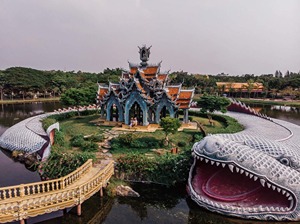
The history of Bangkok can be traced back to the late 18th century, when the city was founded as a small trading post on the west bank of the Chao Phraya River. The area was originally part of the Kingdom of Ayutthaya, which ruled over much of present-day Thailand from the 14th to the 18th century. However, in 1767, the Burmese army sacked Ayutthaya, forcing King Taksin the Great to flee south and establish a new capital.
Taksin chose the site of modern-day Bangkok as the location for his new capital, due to its strategic position at the center of trade routes that connected the kingdom to other parts of Southeast Asia. He named the new city Thonburi and made it the center of a new Siamese kingdom, which would later become known as Siam. Thonburi was a small and relatively insignificant settlement at the time, but it was rapidly transformed into a bustling trading hub and the center of Siamese power.
Under King Taksin and his successors, Thonburi grew into a thriving city and became an important center of trade and commerce. The city’s central location and access to the river made it an ideal hub for trade and commerce, attracting merchants and artisans from all over the region. The city was also a hub of cultural exchange, with influences from neighboring kingdoms and foreign traders shaping its unique character and making it a melting pot of different cultures and traditions.
The founding of Bangkok marked the beginning of a new era in Thai history and set the stage for the city’s growth and development over the following centuries. Today, Bangkok remains a major hub of commerce and trade in Southeast Asia, and its rich history continues to shape its unique cultural character and its place in the world.
The Ayutthaya Era: A Golden Age of Thai Civilization
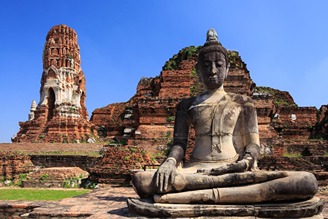
The Ayutthaya Era was a golden age in Thai history, marked by a thriving culture and powerful empire. The Kingdom of Ayutthaya was established in the 14th century and lasted until 1767, when it was sacked by the Burmese army. During this period, Ayutthaya became one of the most prosperous and powerful cities in Southeast Asia, attracting merchants, diplomats, and travelers from all over the world.
Under the Ayutthayan kings, the kingdom experienced a cultural and intellectual renaissance, with the royal court serving as a center of artistic and literary activity. The city was home to numerous Buddhist temples, palaces, and other public buildings, which reflected the wealth and sophistication of the era. It was also a hub of international trade, with merchants from China, India, Persia, and Europe flocking to Ayutthaya to take advantage of its prosperity.
The Ayutthaya Era was characterized by religious tolerance and a cosmopolitan spirit, as the kingdom welcomed people from diverse cultures and backgrounds. This helped to create a unique cultural melting pot, where elements from different civilizations were fused together to create a unique and vibrant cultural heritage. The legacy of the Ayutthaya Era can still be seen in the many ancient ruins and historical sites that dot the city of Ayutthaya and other parts of Thailand, offering a glimpse into the rich cultural heritage of this golden age.
The fall of Ayutthaya marked the end of this era in Thai history, but its legacy continued to shape the culture and politics of the country in the centuries that followed. Today, the Ayutthaya Era is remembered as a time of prosperity, cultural richness, and political power, and is an important part of Thailand’s cultural heritage.
The Thonburi Era: A Period of Political Instability
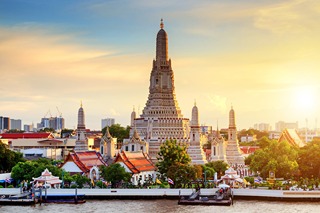
The Thonburi Era, which lasted from 1767 to 1782, was a period of political instability and uncertainty in Thai history. After the fall of Ayutthaya, King Taksin established a new capital in Thonburi, but his rule was marked by political unrest and military conflicts. Despite this, the period also saw the beginning of a cultural revival, as the new capital became a hub of artistic and literary activity.
One of the major challenges faced by King Taksin was the threat posed by the Burmese, who continued to exert their influence over the region and launch attacks on the Siamese kingdom. Taksin responded by consolidating his power and expanding the Siamese territory, but his rule was eventually challenged by a rebellion led by one of his top military commanders.
After Taksin’s downfall, the kingdom was ruled by a series of weak and ineffective leaders, leading to political instability and further conflict. This period was characterized by power struggles, military coups, and territorial disputes, as various factions competed for control of the kingdom.
Despite these challenges, the Thonburi Era was also a time of cultural revival, as the capital became a hub of artistic and literary activity. The royal court and the Buddhist temple were centers of cultural life, attracting artists, musicians, and intellectuals from all over the region. This helped to lay the foundation for a cultural revival that would continue into the next era.
The Thonburi Era was a critical period in Thai history, marking the transition from the powerful Kingdom of Ayutthaya to the modern nation of Thailand. Despite the political instability and uncertainty of the time, the Thonburi Era was also a time of cultural richness and intellectual renewal, which helped to shape the cultural heritage of the country.
The Rattanakosin Era: The Rise of Modern Bangkok
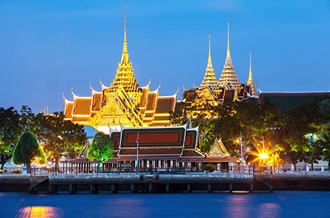
The Rattanakosin Era, which began in 1782, marked the rise of modern Bangkok and the establishment of the Chakri dynasty, which still rules Thailand today. During this era, Bangkok became the political and cultural center of Thailand, and the kingdom experienced a period of stability and prosperity.
Under the leadership of King Rama I, the capital was moved from Thonburi to Bangkok and the city was fortified to defend against foreign invaders. The king also established new administrative and legal systems, and encouraged the growth of trade and commerce. This helped to lay the foundation for the kingdom’s future prosperity.
Throughout the Rattanakosin Era, Bangkok experienced significant growth and development, becoming one of the most prosperous and cosmopolitan cities in Southeast Asia. The royal court and the Buddhist temple were centers of cultural life, attracting artists, musicians, and intellectuals from all over the region. This helped to establish Bangkok as a hub of cultural activity and a symbol of Thai identity.
The kingdom also saw significant territorial expansion during this period, as the Siamese army conquered new territories and the kingdom’s borders expanded. This helped to establish Thailand as a major power in the region, and laid the foundation for its future as a modern nation-state.
The Rattanakosin Era was a critical period in Thai history, marking the rise of modern Bangkok and the establishment of the Chakri dynasty. Despite the challenges and uncertainties of the time, the era was also a time of stability, prosperity, and cultural richness, which helped to shape the cultural heritage of the country. Today, the legacy of the Rattanakosin Era can still be seen in the many historical sites and cultural landmarks that dot the city of Bangkok, offering a glimpse into this rich and fascinating period in Thai history.
The Growth of Bangkok During the Colonial Period
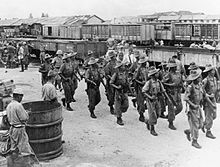
The colonial period in Bangkok’s history, which lasted from the late 19th to mid-20th century, was a time of significant growth and transformation for the city. During this period, Bangkok became a major center of commerce and trade, attracting foreign investment and modernization. This helped to transform the city into a thriving metropolis, with new infrastructure, modern buildings, and a rapidly growing population.
However, the colonial period was also marked by political tensions, as the kingdom of Siam (as Thailand was then known) struggled to maintain its independence and sovereignty in the face of European colonial expansion. Despite this, the city continued to grow and develop, attracting immigrants from all over the region and becoming a hub of economic activity.
One of the most significant changes during the colonial period was the introduction of Western-style education and modern infrastructure, which helped to transform the city and the country. New schools, universities, and hospitals were established, and the city’s roads, ports, and transportation systems were improved. This helped to create new opportunities for the people of Bangkok, and paved the way for the city’s future development.
The colonial period also saw the growth of new industries and businesses, as foreign investors brought new technologies and ideas to the city. The textile, rubber, and tin industries boomed, and new shops, offices, and department stores opened, bringing new products and services to the city.
Despite the political tensions and challenges of the colonial period, Bangkok continued to grow and thrive, becoming a center of commerce and culture in Southeast Asia. Today, the legacy of this period can still be seen in the city’s many colonial-era buildings and landmarks, offering a glimpse into this rich and fascinating period in Bangkok’s history.
Bangkok During World War II and the Post-War Era
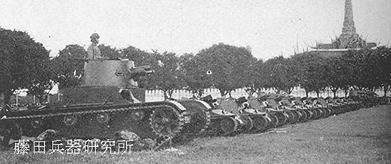
Bangkok during World War II and the post-war era was a time of great upheaval and change for the city. At the beginning of the war, Bangkok was occupied by Japanese forces, who used the city as a base for their operations in Southeast Asia. This occupation had a profound impact on the city, causing significant damage and disruption to the local economy and population.
After the war ended, Bangkok began to rebuild and recover, with the help of foreign aid and investment. The city saw significant growth and development during the post-war era, as new industries, businesses, and infrastructure were established. The city’s population also grew rapidly, as people from all over the country and the region migrated to the city in search of new opportunities.
One of the most significant developments during the post-war era was the growth of tourism in Bangkok. The city’s rich cultural heritage and vibrant nightlife attracted millions of visitors from around the world, making tourism a major contributor to the city’s economy. At the same time, the city also saw the rise of new industries, such as electronics, software development, and financial services, which helped to create new jobs and stimulate economic growth.
Despite the many challenges and difficulties of the post-war era, Bangkok continued to grow and thrive, becoming a center of commerce, culture, and tourism in Southeast Asia. Today, the legacy of this period can still be seen in the city’s modern skyline, thriving economy, and dynamic cultural scene, offering a glimpse into the rich history and development of Bangkok during this fascinating period.
The Cultural Renaissance of Bangkok in the 1980s and 1990s
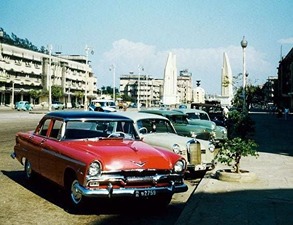
The cultural renaissance of Bangkok in the 1980s and 1990s was a time of great artistic and intellectual growth and creativity for the city. During this period, Bangkok saw a surge of interest in the arts, with new galleries, theaters, and cultural institutions being established and new artists, writers, and musicians emerging.
At the heart of this cultural renaissance was a growing appreciation for the rich cultural heritage of Thailand and a desire to preserve and promote traditional Thai arts and crafts. This led to the revival of traditional Thai dance, music, and theater, as well as the creation of new forms of contemporary art and literature that reflected the experiences and perspectives of the people of Thailand.
The cultural renaissance of Bangkok was also fueled by a growing sense of national pride and identity, as the people of Thailand sought to assert their cultural heritage and independence in the face of globalization and cultural homogenization. This led to a surge of interest in traditional Thai arts and crafts, as well as a renewed focus on Thai cultural heritage and history.
During this period, Bangkok also saw the emergence of new cultural institutions, such as the National Museum, the National Theater, and the National Gallery, which helped to promote and preserve Thai cultural heritage. At the same time, new festivals, such as the Bangkok International Film Festival and the World Music Festival, were established, showcasing the best of Thai and international cultural talent.
The cultural renaissance of Bangkok in the 1980s and 1990s was a time of great creativity and cultural vibrancy, helping to cement the city’s reputation as one of the most culturally rich and vibrant cities in Southeast Asia. Today, the legacy of this period can still be seen in the city’s thriving cultural scene, offering a glimpse into this exciting and dynamic period in Bangkok’s cultural history.
The Contemporary History of Bangkok: A City in Flux
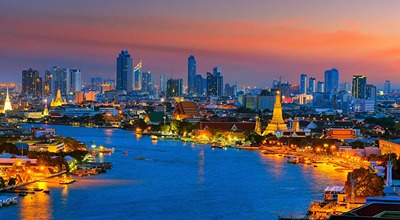
The contemporary history of Bangkok is a story of a city in flux, as it continues to adapt and evolve to the challenges and opportunities of the 21st century. In recent years, Bangkok has faced a number of challenges, including rising crime and poverty, environmental degradation, and political instability, as well as opportunities, including rapid economic growth, increasing international recognition, and a thriving cultural scene.
Despite these challenges, Bangkok continues to be one of the most dynamic and exciting cities in Asia, attracting millions of visitors each year. The city’s vibrant street life, bustling markets, and diverse cultural offerings, as well as its rich history and heritage, make it a unique and unforgettable destination for visitors from around the world.
In recent years, Bangkok has also become a major center for international business, attracting investment from around the world and playing a key role in the region’s economic growth. At the same time, the city has also become an important hub for transportation, with modern airports, seaports, and roads connecting it to other parts of Thailand and Southeast Asia.
Despite these challenges, Bangkok remains a city of incredible resilience and vitality, with a thriving cultural and artistic scene, a rich history and heritage, and a vibrant economy that continues to grow and thrive. Today, the city is poised to face the challenges of the 21st century and to continue to be one of the most dynamic and exciting cities in Asia, offering a glimpse into the contemporary history of this fascinating city.
Conclusion: Preserving the Rich Heritage of Bangkok for Future Generations.
In conclusion, the rich history of Bangkok is an integral part of the city’s cultural heritage and identity, and it is essential that this heritage is preserved for future generations to enjoy and appreciate. From its founding as an ancient Siamese kingdom to its growth as a modern metropolis, Bangkok’s history is a testament to the resilience and vitality of the Thai people, and it is a story that deserves to be shared and remembered.
As Bangkok continues to evolve and grow, it is important that its rich cultural heritage is protected and celebrated. This can be achieved through the preservation of historic buildings, temples, and monuments, as well as through the promotion of traditional Thai arts and crafts, such as dance, music, and theater.
Moreover, it is essential that the stories and experiences of the people of Bangkok are preserved and celebrated, as they provide a glimpse into the city’s rich cultural heritage and help to ensure that the city’s history is not lost or forgotten. By preserving and promoting the rich history of Bangkok, we can help to ensure that future generations can continue to enjoy and appreciate this incredible city, and its rich cultural heritage, for many years to come.
In conclusion, Bangkok is a city with a rich and fascinating history that offers a wealth of sights and experiences for visitors to enjoy. If you’re planning a trip to Bangkok, be sure to take some time to explore its historical landmarks and cultural heritage. And for those who are considering making Bangkok their home, our Bangkok expat guide provides comprehensive information about relocating to this vibrant city. Additionally, our guide to the best places to live in Bangkok can help you find the perfect neighborhood to call home, and our list of affordable Bangkok destinations is a great resource for those looking to stretch their budget. Whether you’re a history buff, an adventure seeker, or simply looking to immerse yourself in the culture of Bangkok, there’s something for everyone in this fascinating city.
Q. Can you provide a brief overview of the historical background of Bangkok?
Bangkok, the capital of Thailand, has a rich history dating back to the 15th century when it was established as a small trading center. Throughout the centuries, it grew into an important political and cultural center, undergoing several changes in leadership, with the latest being the establishment of a constitutional monarchy in 1932.
Q. What was the original name of Bangkok?
Bangkok was originally named “Krung Thep” in the Thai language, meaning “City of Angels.” It was later renamed to its current name, Bangkok, in the late 18th century by King Rama I when he moved the capital from Thonburi to Krung Thep.
Q. What makes Bangkok a renowned destination?
Bangkok is famous for its vibrant culture, rich history, and bustling city life. It is also known for its street food, stunning temples, and iconic landmarks such as Wat Arun, the Grand Palace, and Chatuchak Market.
